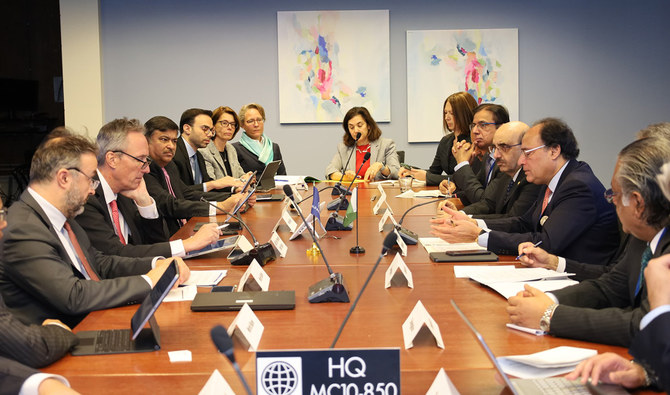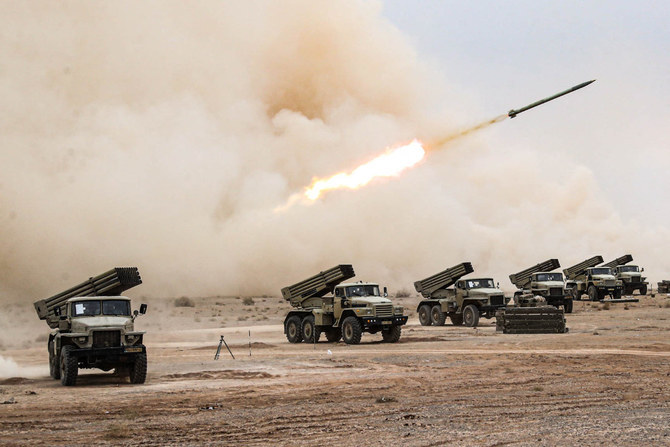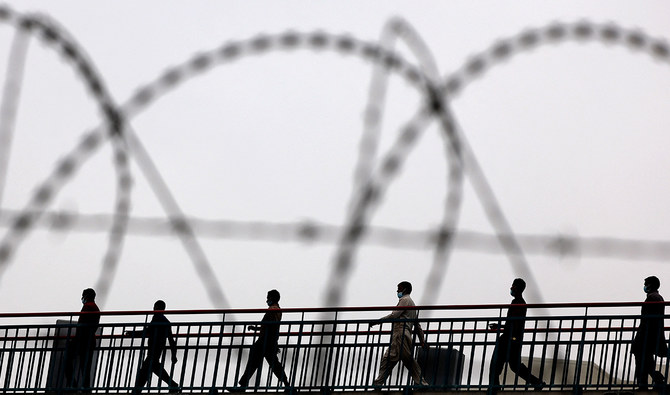Software startup Slack Technologies Inc. said it raised $250 million from SoftBank Group Corp. and other investors in its latest funding round, boosting the company’s valuation to $5.1 billion.
The latest fund-raising, led by SoftBank through its giant Vision Fund and joined by Accel and other investors, lifted Slack’s total funds raised to $841 million, the enterprise messaging operator said in an e-mailed statement.
The fund provides resources which will help Slack to run as a cash-generating company and the raise will reduce its dependence on outside financing, Slack Chief Executive Stewart Butterfield said.
In July, sources had told Reuters that Slack was raising $250 million in a new funding round led by SoftBank.
The company in the past has raised money from venture firms including GGV Capital, Spark Capital and Thrive Capital, among others.
Slack’s sizeable funding round reflects the trend of a growing number of $100 million-plus checks pouring into technology startups. In the second quarter this year, there were 34 venture capital deals of $100 million or more, nearly triple the 12 such transactions in the first quarter, according to data firm PitchBook Inc.
These large rounds have helped drive an uptick in startup funding since the end of last year, with venture capitalists investing $15.7 billion in companies during the second quarter this year, a 27 percent increase from the first quarter and making for the strongest quarter in a year, according to Thomson Reuters data.
Bloomberg and Financial Times previously reported the funding deal.
Slack valued at $5.1 bln after new funding led by SoftBank
Slack valued at $5.1 bln after new funding led by SoftBank

Pakistani pacer Mohammad Amir sets sights on T20 World Cup after comeback

- Amir played his first T20 international match for Pakistan on Thursday after a nearly four-year hiatus
- Pacer says he feels his body is fitter compared to 2019 when he last played for Pakistan in a World Cup
ISLAMABAD: Pakistani fast bowler Mohammad Amir said this week he has set his sights on the upcoming T20 World Cup 2024, as he gears up to mark his return to international cricket after a nearly four-year hiatus.
The 32-year-old pacer played his first match on Thursday against New Zealand in Rawalpindi but did not bowl a single delivery as rain suspended play during the first over of the match.
Amir, one of Pakistan’s most prolific fast bowlers, retired in December 2020 after being dropped from the side. He changed his mind last month and decided to restart his career, which had also been stalled by a spot-fixing ban in 2010.
“The way the Pakistan Cricket Board (PCB) management brought me back, it is for a short-term goal, the [T20] World Cup,” Amir told PCB Digital in an interview on Friday. “And that is the biggest goal.”
The left-arm pacer pointed out that Pakistan had played in the semifinal of the T20 World Cup 2021 and competed in the final of the T20 World Cup in 2022. However, it had failed to “cross the line” and become world champions on both occasions.
“If that happens [Pakistan win the World Cup] it would be a huge achievement for me, to be a part of that team,” he said.
Amir said he feels he is much fitter compared to 2019 when he last represented Pakistan in a World Cup tournament.
“See, you cannot express yourself properly in the ground until you’re fit,” he said. “So I feel the way my body feels fresh right now, I can chip in more and prove beneficial to the team via my performance.”
The pacer credited his wife and children for helping him stay positive.
“She makes sure that all my focus is on cricket,” he said. “I think that always gives me energy and helps me to face whatever I have to.”
Pakistan face New Zealand in the second T20 fixture of the five-match series in Rawalpindi today, Saturday. The two sides will lock horns in Rawalpindi on April 21 before meeting for the remaining two fixtures in Lahore on April 25 and 27.
Teams:
Pakistan: Babar Azam (captain), Usman Khan, Abrar Ahmed, Iftikhar Ahmed, Mohammad Rizwan, Mohammad Amir, Muhammad Irfan Khan, Naseem Shah, Saim Ayub, Shadab Khan, Shaheen Shah Afridi
New Zealand: Michael Bracewell (captain), Mark Chapman, Josh Clarkson, Jacob Duffy, Dean Foxcroft, Ben Lister, Jimmy Neesham, Tim Robinson, Ben Sears, Tim Seifert, Ish Sodhi
Pakistan’s finmin discusses energy, tax reforms with senior World Bank official

- Pakistan has vowed to broaden its tax base, reform energy sector and privatize loss-making state-owned entities
- Pakistan’s finance minister is in Washington to attend spring meetings by the International Monetary Fund, World Bank
KARACHI: Pakistan’s Finance Minister Muhammad Aurangzeb underlined the government’s resolve to carry out reforms in the energy and tax sectors in his meeting with a senior World Bank official this week, the finance ministry said on Saturday, as Islamabad grapples with an economic crisis amid surging inflation and low foreign exchange reserves.
Reeling from a macroeconomic crisis, Pakistan has assured international financial institutions and bilateral partners it would take concrete measures to broaden its tax base, carry out reforms in the energy sector and overhaul loss-making state-owned enterprises (SOEs).
Aurangzeb has been in Washington since last week to participate in spring meetings organized by the IMF and World Bank. His tour is an important one for the South Asian country as Pakistan’s ongoing nine-month, $3 billion loan program with the International Monetary Fund designed to tackle its balance-of-payments crisis, expires this month.
Aurangzeb met Martin Raiser, the World Bank’s regional vice president for South Asia, on Friday to discuss the government’s economic reforms.
“Underlined the reform thrust of the government in the areas of energy, tax reforms and SOEs,” the finance ministry said. “Informed that government was pursuing short and long-term goals in these sectors.”
Aurangzeb said the World Bank’s focus on climate change, digitalization and human development aligns with Islamabad’s priorities, highlighting the government’s vision to realize the country’s true potential for economic growth.
“Agreed on the need for reforms in the agriculture sector, water management and waste-water treatment,” the ministry said.
Aurangzeb met World Bank’s President Ajay Banga on Tuesday during which he spoke about the government’s reforms in tax and energy sectors and highlighted Pakistan’s progress on privatization of government entities.
In an interview on Monday, the Pakistani finance minister had said Islamabad would seek a fresh three-year IMF program, adding that the government plans to continue with necessary policy reforms to rein in deficits, build up reserves and manage soaring debt servicing.
In a separate statement, the finance ministry said Aurangzeb met China’s Finance Minister Lan Fo’an on Friday. During the exchange, the Pakistani finance chief thanked his Chinese counterpart for Beijing’s regular rollovers which helped plug Pakistan’s external financing gaps.
“Informed that Pakistan was entering into a larger and extended program with IMF and looked forward to the support of China,” the ministry said, adding that he highlighted the government’s economic reforms in various sectors during his meeting with the Chinese official.
Taiwan’s defense ministry detects 21 Chinese military aircraft

- The median line bisects the Taiwan Strait, a narrow 180-kilometer waterway separating the island from mainland China
TAIPEI: Taipei’s defense ministry said it had detected 21 Chinese military aircraft around the self-ruled island since 8:15 am (0015 GMT) on Saturday, a month before Taiwan’s May 20 inauguration of incoming president Lai Ching-te.
“17 aircraft (of the 21) crossed the median line and its extension, entered our northern, central, and southwestern (air defense identification zone), and joined PLA vessels for joint combat patrol,” it said in a statement posted on X around 11:30 am.
Taiwan’s armed forces “are monitoring the activities with our joint surveillance systems, and have dispatched appropriate assets to respond accordingly.”
The median line bisects the Taiwan Strait, a narrow 180-kilometer waterway separating the island from mainland China.
Beijing does not recognize the line as it claims democratic Taiwan as part of its territory. It has also never renounced the use of force to bring the island under its control.
China sends warplanes and naval vessels around Taiwan on a near daily basis — a move experts say is a form of “grey-zone harassment,” stopping short of an outright act of war but enough to exhaust Taipei’s armed forces.
According to the defense ministry, the 21 aerial objects detected Saturday included J-16 fighter jets and Y-8 medium-range transport aircraft, as well as drones.
The highest number around Taiwan so far this year was in March, when the ministry said 36 Chinese aircraft were detected in a single 24-hour period.
Last year’s record was in September when Beijing’s military sent 103 aircraft — 40 of which crossed the median line — in a 24-hour period.
Saturday’s show of force comes a day after China activated two aviation routes that run close to Taiwan’s outlying islands of Kinmen and Matsu.
Taipei’s Civil Aviation Administration expressed “solemn protest against China’s unilateral measures without consultation” on Friday.
The new routes make the airspace separation between the two sides “very narrow,” it said, increasing flight safety risks during bad weather or abnormal flight operations.
China’s aviation authority also said Friday the airspace around Fuzhou Changle Airport — 30 kilometers from the closest outlying Taiwanese island — would be “further optimized and adjusted” on May 16, four days before the inauguration.
Under the administration of Taiwanese President Tsai Ing-wen, tensions between Beijing and Taipei have ramped up, as she and her government do not acknowledge China’s claim.
Her deputy, Vice President Lai, won elections in January despite warnings from Beijing that he would be the cause of “war and decline” for Taiwan.
China regards Lai — who used to be outspoken about Taiwan independence — as a “dangerous separatist,” though he has moderated his views in recent years.
Tehran plays down reported Israeli attacks, signals no further retaliation

- United States received advance notice of Israel’s reported strike on Iran, reports US media
- Countries around the world called on both sides to avert further escalation amid tensions
DUBAI/JERUSALEM: Explosions echoed over an Iranian city on Friday in what sources described as an Israeli attack, but Tehran played down the incident and indicated it had no plans for retaliation — a response that appeared gauged toward averting region-wide war.
The limited scale of the attack and Iran’s muted response both appeared to signal a successful effort by diplomats who have been working round the clock to avert all-out war since an Iranian drone and missile attack on Israel last Saturday.
Iranian media and officials described a small number of explosions, which they said resulted from Iran’s air defenses hitting three drones over the city of Isfahan. Notably, they referred to the incident as an attack by “infiltrators,” rather than by Israel, obviating the need for retaliation.
An Iranian official said there were no plans to respond against Israel for the incident.
“The foreign source of the incident has not been confirmed. We have not received any external attack, and the discussion leans more toward infiltration than attack,” the official said.
Israel said nothing about the incident. It had said for days it was planning to retaliate against Iran for Saturday’s strikes, the first ever direct attack on Israel by Iran in decades of shadow war waged by proxies which has escalated throughout the Middle East through six months of battle in Gaza.
The United States received advance notice of Israel’s reported strike on Iran but did not endorse the operation or play any part in its execution, US media quoted officials as saying.
NBC and CNN, citing sources familiar with the matter and a US official, respectively, said Israel had provided Washington with pre-notification of the strike.
Various networks cited officials confirming a strike had taken place inside Iran, with CNN quoting one official as stating the target was not a nuclear facility.
The two longstanding foes had been heading toward direct confrontation since a presumed Israeli airstrike on April 1 that destroyed a building in Iran’s embassy compound in Damascus and killed several Iranian officers including a top general.
Iran’s response, with a direct attack on Israel, was unprecedented but caused no deaths and only minor damage because Israel and its allies shot down hundreds of missiles and drones.
Allies including the United States had since been pressing hard to ensure any further retaliation would be calibrated not to provoke a spiral of hostilities. The British and German foreign ministers visited Jerusalem this week, and Western countries tightened sanctions on Iran to mollify Israel.
In a sign of pressure within Israel’s hard-right government for a stronger response, Itamar Ben Gvir, the far-right national security minister tweeted a single word after Friday’s strikes: “Feeble!.”
Countries around the world called on Friday for both sides to avert further escalation.
“It is absolutely necessary that the region remains stable and that all sides restrain from further action,” EU Commission head Ursula von der Leyen said. Similar calls came from Beijing and from Arab states in the region.
In financial markets, global shares eased, oil prices surged and US bond yields fell as traders worried about the risks.
NO MENTION OF ISRAEL
Within Iran, news reports on Friday’s incident made no mention of Israel, and state television carried analysts and pundits who appeared dismissive about the scale.
An analyst told state TV that mini drones flown by “infiltrators from inside Iran” had been shot down by air defenses in Isfahan.
Shortly after midnight, “three drones were observed in the sky over Isfahan. The air defense system became active and destroyed these drones in the sky,” Iranian state TV said.
Senior army commander Siavosh Mihandoust was quoted by state TV as saying air defense systems had targeted a “suspicious object.”
Iranian President Ebrahim Raisi had warned Israel before Friday’s strike that Tehran would deliver a “severe response” to any attack on its territory.
Iran told the United Nations Security Council on Thursday that Israel “must be compelled to stop any further military adventurism against our interests” as the UN secretary-general warned that the Middle East was in a “moment of maximum peril.”
By morning, Iran had reopened airports and airspace that were shut during the strikes.
Still, there was alarm over security in Israel and elsewhere. The US Embassy in Jerusalem restricted US government employees from travel outside Jerusalem, greater Tel Aviv and Beersheba “out of an abundance of caution.”
In a statement, the embassy warned US citizens of a “continued need for caution and increased personal security awareness as security incidents often take place without warning.”
Israel’s assault on Gaza began after Hamas Islamists attacked Israel on Oct. 7, killing 1,200, according to Israeli tallies. Israel’s military offensive has killed about 34,000 Palestinians in Gaza, according to the Gazan health ministry.
Iran-backed groups have declared support for Palestinians, carrying out attacks from Lebanon, Yemen and Iraq, raising fears the Gaza conflict could grow into a wider regional war.
Pakistan to train 1 million youth annually to export skilled human resource to Gulf countries

- Islamabad is planning to roll out a new education policy next month, with a focus on vocational training and out-of-school children
- Educationists, however, say the real challenge for the government is to ensure implementation of the policy, focus on teacher training
ISLAMABAD: Pakistan’s government is working on a new education policy to impart technical skills to one million youth annually to export trained human resource to Saudi Arabia and other Gulf countries, an official said on Friday.
The cash-strapped South Asian nation of 241 million has been working on a holistic national education policy to cover technical training for the youth by enrolling over 2.5 million out-of-school children.
The Special Investment Facilitation Council (SIFC), a federal body led by Prime Minister Shehbaz Sharif to attract investment from foreign and domestic sources, has given specific targets to the education ministry to finalize a comprehensive policy to improve the education sector.
“This new policy aims to impart vocational training to at least one million youth per annum to export skilled workforce to Saudi Arabia and other Gulf countries,” Rana Mujtaba, a spokesperson for the Pakistani ministry of education and professional training, told Arab News.
“It will be rolled out in May.”
There are around 9 million overseas Pakistanis living and working in different countries, including 2.8 million in Saudi Arabia, who remit around $30 billion back home annually to support the country’s fragile economy.
“Majority of our overseas workforce is unskilled labor. Therefore, the government is now focusing on enhancing vocational capacity of the youth,” Mujtaba said.
In the National Education Policy 2017-2025, Pakistan aimed to raise its literacy rate from the existing 60 percent to 90 percent by 2025, narrow down the gender gaps, reduce rural and urban imbalance, improve quality of education, promote technical and vocational education with skill development programs, and ensure good governance. But all this has yet to be achieved.
Mujtaba said Pakistan’s vocational training institutes already had a “strong affiliation” with Saudi Arabia, where all training certificates were accepted.
“The SIFC that is chaired by the PM has given a general direction to the ministry to work on a new education policy to improve the sector’s performance,” he said.
The spokesperson dispelled the notion that the education ministry was working on the new education policy without taking provincial governments on-board, since education has primarily been a provincial subject in the South Asian country.
“The federal government is in fact supporting the provinces in improving the education sector. All provincial ministers and education secretaries are on-board as the federal ministry has sought inputs from all of them,” he said.
“This will be a holistic policy that will also address the issue of out-of-school children, improving the higher education’s standards, domestic and foreign scholarships for the students.”
Educationists and public policy experts said the government had already devised numerous policies and produced documents to improve the education sector, but it would lack in implementation of these plans.
“The silver lining in the new policy is that the government is for the first time focusing on out-of-school children, but there needs to be an effective mechanism in place with clear timelines to address this issue,” Taimur Bandey, an educationist, told Arab News.
“The government needs to allocate its resources for teachers training and upgrade libraries and laboratories in the institutions to improve the education standards.”














